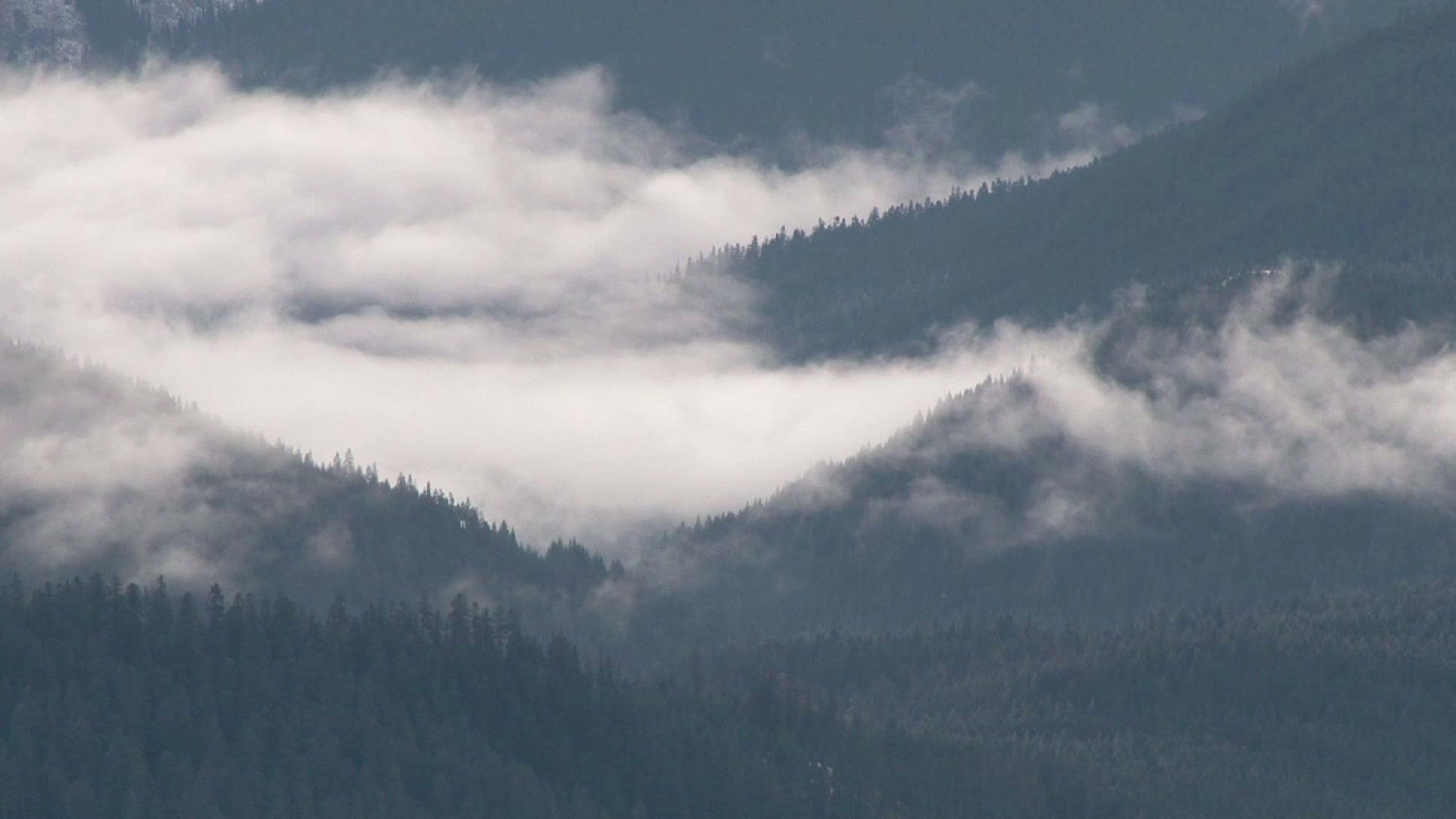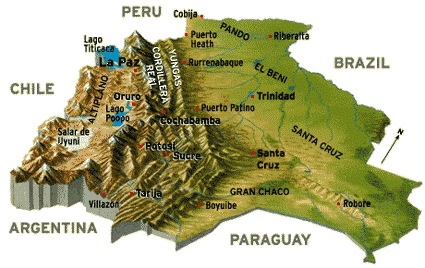

BACKGROUND
The people of Bolivia were civilized for hundreds of years before the Spaniards conquered the area. The city of Tiahuanaco was founded in what is now Bolivia about 400 BC. In the 15th century the Incas conquered Bolivia. Modern Bolivia was once a part of the ancient Inca empire. After the Spaniards defeated the Incas in the 16th century, Bolivia's predominantly Indian population was reduced to slavery.



Bolivia's
Society
Wildlife
Art
ART
Bolivia is home to a unique style of art and architecture known as Mestizo Baroque, created when the traditional religious art brought by the Spaniards was combined with the styles of the indigenous Bolivian people. The colonial period was dominated by artists such as Melchor Pérez de Holguín, whereas 20th century Bolivian artists include Guzman de Rojas, Arturo Borda, Maria Luisa Pacheco, and Marina Núñez del Prado.

WILDLIFE
Bolivian natural parks are among some of the world’s most beautiful and well preserved. The Beni Biosphere, the Kaa-Iya and Madidi National Parks, to name a few, have thousands of species living within them, such as capybaras, sloths, flamingos, chinchillas and llamas, all native to Bolivia. The parks also help look after Bolivian protected species such as spectacled bears, river dolphins, blue paraba macaws and giant otters.







SOCIETY
The Bolivian people are a mixture of descendents of the Spanish colonisers, indigenous Bolivians and ‘mestizos’ (a mix of the two) as well as other small minorities of immigrants and descendants of African slaves from the colonial period. This great diversity means there are varying Bolivian customs and traditions, depending on which part of the country you are in and the social class you are surrounded by. Bolivia has a relatively young society, with around 60% of its population being under the age of 25, and the culture of the country is definitely changing with its young population, one significant change being urban migration from the rural areas.



problems
Goals and

Meet
UN sustainable development goals


Bolivia is the poorest country in South America. About 60% of Bolivians live below the national poverty line. Geography is one of the cause to extreme poverty in Bolivia. Undeveloped roads and infrastructure make up a huge portion of the country, with a majority of the land inhabited by native citizens. This makes it difficult for farmers living in these areas to market their products and travel to sell them

Bolivia's drinking water and sanitation overage has greatly improved since 1990 due to a considerable increase in sectoral investment. However, the country continues to suffer from what happens to be the continent’s lowest coverage levels and from low quality of services. Political and institutional instability have contributed to the weakening of the sector’s institutions at the national and local levels.
Solution
scroll

Habitat for humanity from Great Britain gives a housing loan to low income families who have no access to regular bank financing. In this sense, we have a revolving fund that is aimed at housing solutions like new housing, upgrades to existing housing, repairs, minor additions and progressive improvement.It teaches the value of solidarity and sustainability through this model because the money provided is retrieved and assigned to other families in the same or worse condition.
In 28 years they have provided over 11,000 housing solutions in the departments of La Paz, Cochabamba, Santa Cruz, Oruro and Tarija. Over 50,000 more people now have an adequate home.
Project goal/ size & volume
Goal: Preserving biodiversity, guaranteeing water security, involving local communities
Size: 27 nature reserves covering around 2,000 square kilometers, more than 2 million residents
Volume: 400,000 euros ($508,270)
Problem
Residents in the Bolivian city of La Paz are facing a mounting crisis. As climate change brings warmer weather, glacial ice in the mountains around La Paz is melting away.
But that ice is the city’s main source of water and if the trend continues, millions of residents will be without water in just a few years. The mountain region’s rich diversity of flora and fauna will also disappear. There have been few efforts to stem the tide until now. .
reason
The NGO Nature Conservancy
is constructing nature reserve areas and working to create a sustainable water management system – all with the help of local indigenous communities, who have lived in harmony with the fragile ecosystem for thousands of years.


Cleaning Water
and
Sanitation



Water For People is a non-profit international development organization that supports safe drinking water and sanitation projects in developing countries. It partners with communities and other NGOs to help people improve their quality of life by supporting sustainable drinking water, sanitation and health and hygiene projects.
Typical projects include protected spring-fed community water systems, gravity-fed systems, wells with hand pumps, latrine construction, operator training, and hygiene education.
The organization is currently working in Latin America, Africa and Asia. In 2007, it supported the provision of safe and sustainable drinking water resources and/or sanitation facilities benefiting more than 108,000 people in the developing world.
Water for People





Solution
Since 2005, the World Bank’s Rural Partnerships Project (PAR) has worked to improve access of organized small-scale producers to markets through productive partnerships with buyers in an effort to guarantee their sustainability.
In view of the good results so far, an upcoming extension of the project (PAR II), will benefit 35,000 additional families.
Bolivia has more rural partnerships than any other Latin American country, with approximately 800 productive partnerships and 30,000 beneficiary families to date.
“In the past, the farmers immigrated to other countries, like Spain or Argentina, but when PAR was established we could built good, high quality flower nurseries thanks to the investment and technical assistance. Now we have more income for our families and we even provide employment”, said Marcelino Cervantes, from the association of organic flowers producers of Bella Vista.







